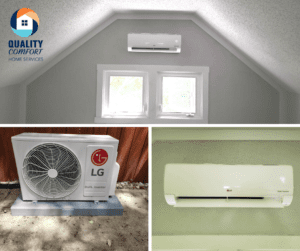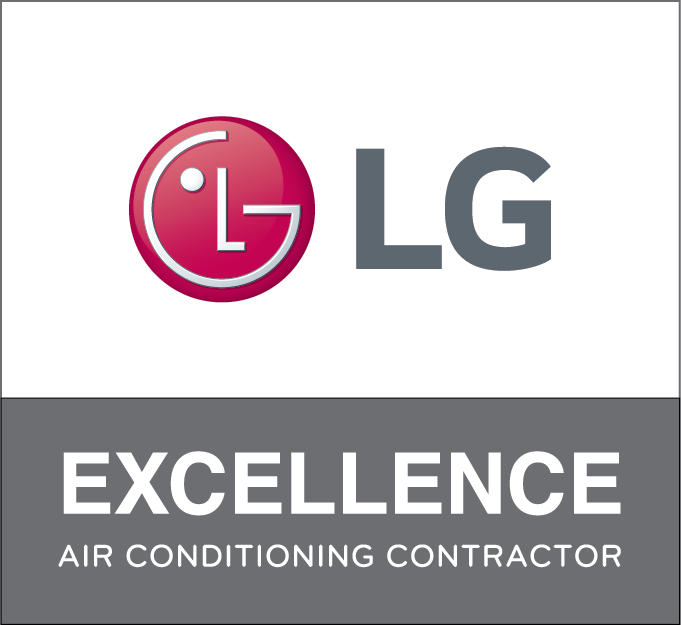Choosing the right HVAC system is crucial for both comfort and efficiency in any space, whether it’s a home, office, or hotel room. Two popular options are ductless mini split systems and Packaged Terminal Air Conditioners (PTACs). Both have unique advantages and drawbacks, making them suitable for different scenarios. Let’s dive into the similarities and differences between these two HVAC units.
What is a Ductless Mini Split System?

A ductless mini split system consists of two main components: an outdoor compressor/condenser and an indoor air-handling unit. These are connected by a conduit housing the power cable, refrigerant tubing, suction tubing, and a condensate drain. Mini splits can have multiple indoor units connected to a single outdoor unit, allowing for zoning, or they can be used in a single-zone setup. These are most commonly used in residential homes or small office spaces.
What is a PTAC Unit?
A PTAC unit is a single, self-contained heating and cooling system that is typically installed through a wall. Commonly found in hotels and motels, PTAC units are also used in apartments, condos, and sometimes even in single-family homes. These units are known for their ease of installation and relatively low upfront costs.

Similarities
Independent Operation
Both mini splits and PTAC units operate independently from a central HVAC system, providing heating and cooling to specific areas.
Ease of Installation
Neither requires extensive ductwork, making installation simpler compared to traditional central air systems.
Zoning Capabilities
Each system allows for individual temperature control in different areas, improving comfort and energy efficiency.
Differences
Energy Efficiency
Mini Splits: One of the most significant advantages of mini split systems is their energy efficiency. They use inverter technology, which adjusts the compressor speed to match the cooling or heating demand, resulting in lower energy consumption. This makes them a more eco-friendly option and can significantly reduce utility bills over time.
PTAC Units: While PTAC units are generally less efficient than mini splits, they still offer reasonable efficiency for their cost. However, they operate at a fixed speed, which means they can be less efficient during periods of partial load.
Space and Aesthetics
Mini Splits: These units are known for their sleek and unobtrusive design. The indoor air-handling units can be mounted high on walls or even concealed in ceilings, taking up minimal space. This makes them an excellent choice for those who value aesthetics and space-saving designs.
PTAC Units: PTAC units are bulkier and more noticeable since they are installed through an exterior wall. They also require a large grille on the outside of the building, which can impact the building’s appearance.
Cost
Mini Splits: The initial cost of mini split systems is higher compared to PTAC units. However, this investment often pays off in the long run due to their higher energy efficiency and lower operating costs.
PTAC Units: PTAC units are generally more affordable upfront, making them an attractive option for budget-conscious consumers or for spaces where cost is a critical factor. However, their operational efficiency is lower, which can result in higher energy bills over time.
Longevity and Maintenance
Mini Splits: Known for their durability, mini split systems can last up to 20 years with proper maintenance. They also tend to require less frequent repairs, adding to their long-term value.
PTAC Units: PTAC units typically have a shorter lifespan, often ranging between 7 to 10 years. They may also require more frequent maintenance and repairs, which can add to their total cost over time.
Which is Right for You?
Choosing between a ductless mini split and a PTAC unit depends on your specific needs and priorities.
For Energy Efficiency and Longevity: Mini splits are the clear winner. They provide excellent energy savings, a longer lifespan, and a more discreet installation, making them ideal for homeowners looking to invest in long-term comfort and efficiency.
For Cost and Simplicity: PTAC units are a practical choice. They offer a lower upfront cost and straightforward installation, making them suitable for budget-conscious projects or for situations where multiple units need to be installed quickly and efficiently.
In conclusion, both ductless mini split and PTAC HVAC units have their unique advantages and are suited to different applications. By understanding their differences, you can make an informed decision that best meets your needs and ensures a comfortable and efficient indoor environment.
Need an estimate on a mini split?
Quality Comfort Home Services in Cincinnati, OH specializes in mini split installation. Give us a call at 513-620-4822 or book an estimate online today.


